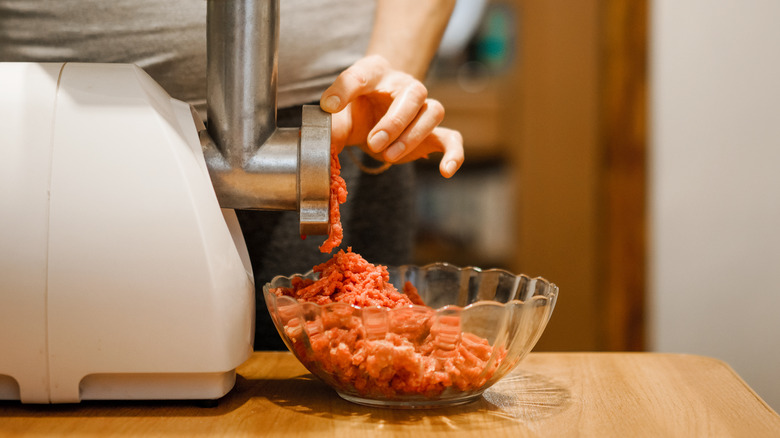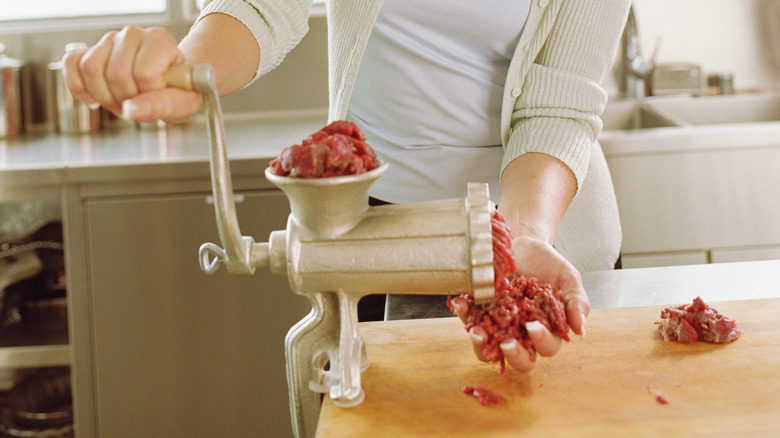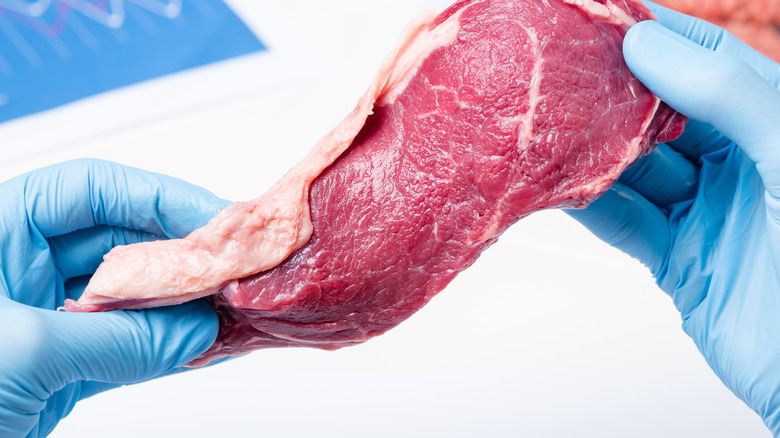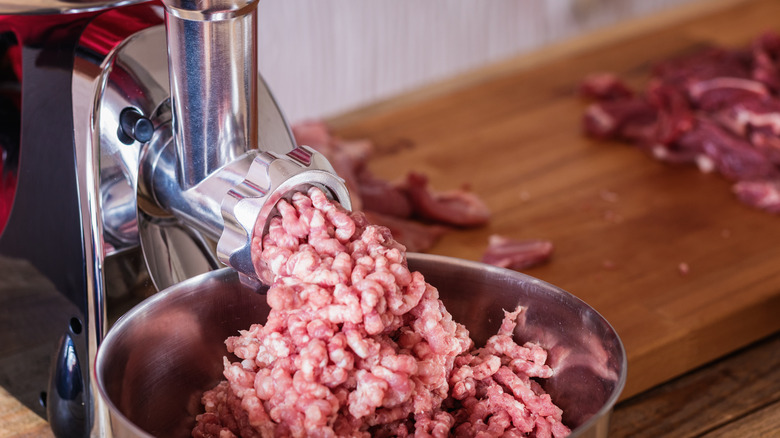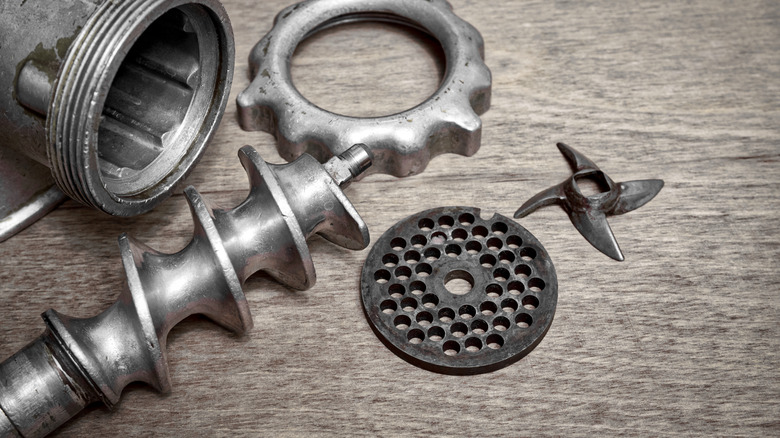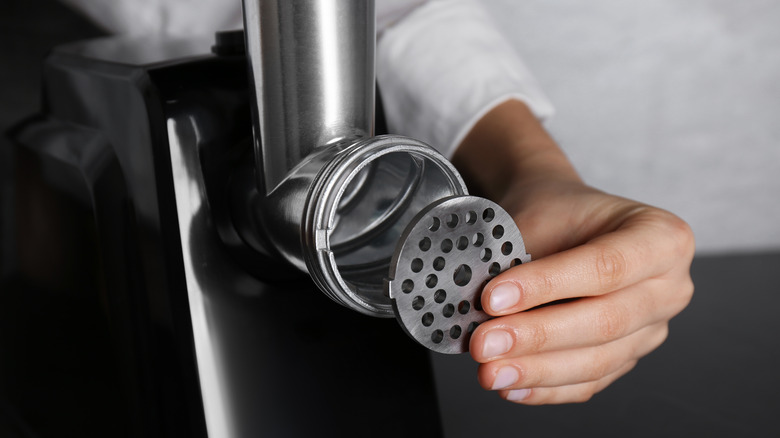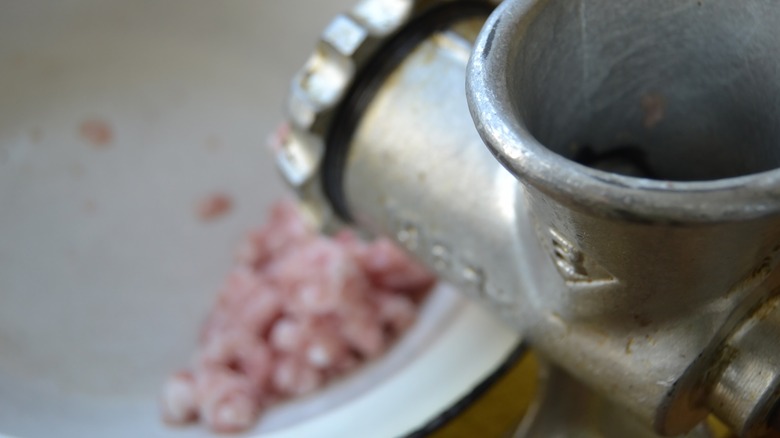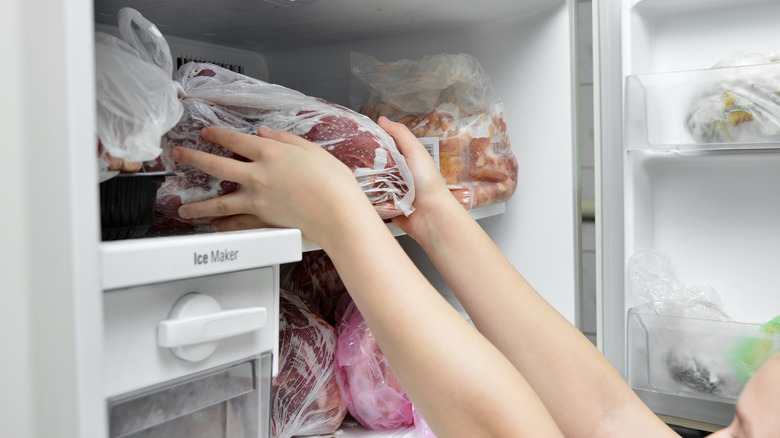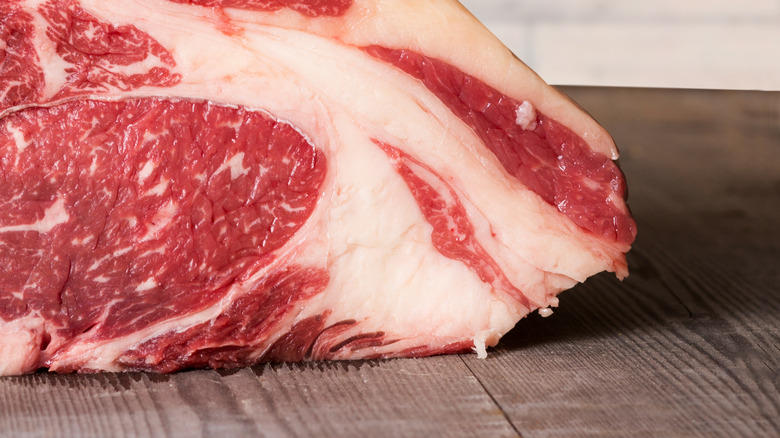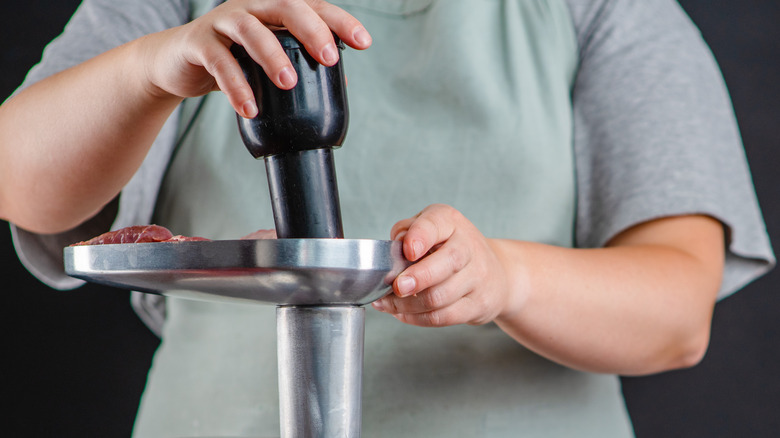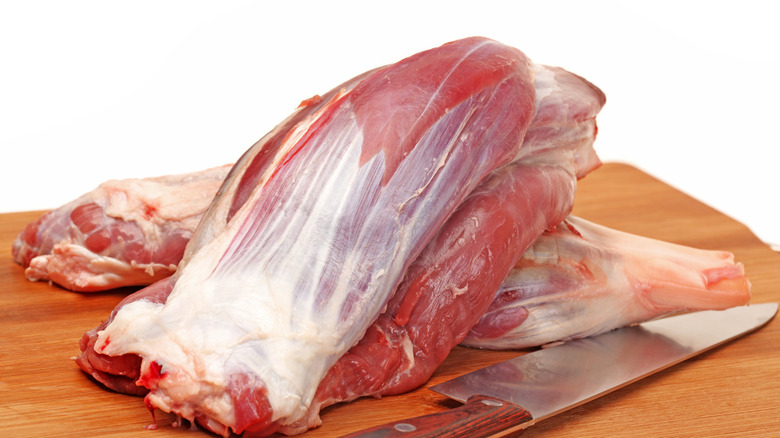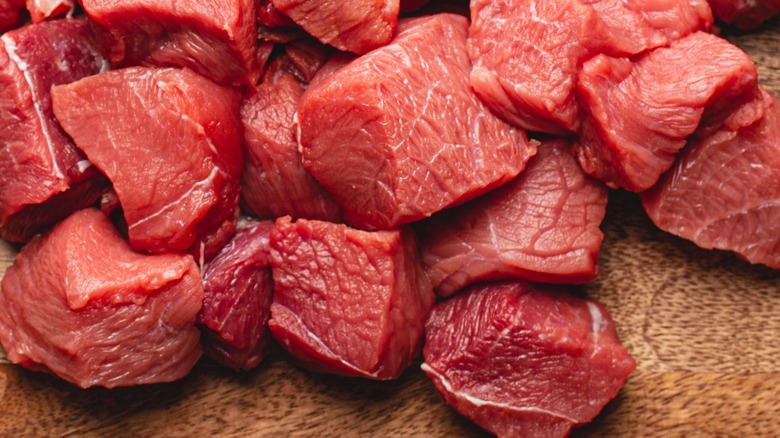11 Mistakes You Need To Avoid When Grinding Your Own Meat
Grinding and processing your own meat is a culinary skill that empowers you with complete control over the quality and characteristics of your dishes, making it a valuable practice for both aspiring chefs and home cooks. By avoiding common mistakes in the process, you can achieve exceptional results that go beyond just taste and texture.
With the ability to adjust the coarseness, fat content, and blend of cuts, grinding your own meat ensures superior outcomes in your recipes. Processing meat takes your cooking to a new level, allowing you to select cuts that perfectly complement your preferences and experiment with various flavor profiles.
By refining your meat grinding and processing techniques, you open up a world of possibilities in the kitchen. Customized burgers with your preferred fat content and texture, meaty pasta sauces, gourmet sausages with mixed meat and seasonings, or perfecting your signature meatloaf recipe — all can be elevated with the versatility of grinding and processing your own meat.
1. Not following the manual
Reading and understanding the manual is crucial for the safe and effective operation of your meat grinder. It provides essential instructions and important safety precautions to follow during operation. Neglecting the manual can increase the risk of accidents, injuries, and potential damage to the grinder — and yourself.
The manual offers comprehensive guidance on the grinder's features, assembly procedures, and maintenance tips, including technical specifications such as power rating, voltage, and capacity. It outlines any limitations or restrictions regarding the types of meat or materials suitable for use with the grinder. By adhering to the manual, you can confidently and effectively operate the grinder, gaining insights into its functionality and achieving optimal results.
Additionally, you'll find practical tips on adjusting the settings for different types of meat and even discover recipes for creating various dishes. It goes beyond just operation and should also provide troubleshooting guidance, empowering you to identify and resolve common issues on your own without the need for technical support. And if you encounter any difficulties, the manual should include information about the product warranty and how to contact customer support.
2. Not inspecting the meat for undesired parts
By thoroughly inspecting the meat, you can prevent potential damage to the grinder's blades or motor caused by foreign objects such as bone fragments, cartilage, or hard materials. These foreign objects can pose safety risks if they end up in the ground meat, and they can also harm the grinder's components if not detected and removed beforehand.
Removing skin or silver skin is crucial to achieve a smooth and consistent texture in the ground meat. Neglecting to do so can result in excessive fat content or unwanted chewiness, compromising the taste and texture of the cooked meat.
Additionally, it's essential to be vigilant about objects that may contaminate the meat but don't originate from it. These can include things like plastic or metal fragments that might accidentally enter the meat during packaging or handling processes. Taking the time to inspect and remove these undesirable parts, as well as any potential contaminants, ensures a safe and high-quality end product and a more enjoyable dining experience.
3. Grinding too quickly
Taking the time to grind the meat at a slower pace — but not dead slow — offers several benefits. First, it allows for better control over the texture of the ground meat. This becomes particularly important when aiming for specific textures, such as a fine or coarse grind.
Grinding too quickly can lead to uneven texture, with some parts of the meat being over-processed while others remain under-processed. This inconsistency in texture can impact the taste and mouthfeel of the cooked meat. Additionally, rapid grinding can generate more heat, which may affect the meat's quality, especially if you're working with lean cuts that are prone to drying out.
The key takeaway here is to find a good grinding pace that matches the meat you're working with. To do that, starting with a slower pace is highly recommended. Grinding the meat too slowly or for an extended period can result in excessive processing, leading to a texture that is too fine or mushy. On the other hand, grinding too fast can cause the meat and fat to mix together and become one sticky mass. To get the best results, you need to find the right balance that works well for the type of meat you are using.
4. Not chilling the grinder parts
When the grinder parts are kept at a colder temperature, they create a favorable environment for achieving a consistent and uniform grind. Heat generated during grinding can cause the fat within the meat to melt, leading to changes in texture and moisture content. The cold temperature helps maintain the firmness of the meat during grinding, preventing it from becoming soft and mushy. As a result, you can achieve a more precise texture that aligns with your needs.
To minimize the heat produced during the grinding process, it's beneficial to chill certain meat grinder components like the blade, hopper, grinding plates, and auger, in addition to the meat. However, it's important to ensure that no electronic parts, such as the motor or electrical components, get chilled to avoid potential damage.
Benefiting the tool itself, utilizing chilled parts can lead to a longer-lasting grinder. Like any other motorized equipment, the cold environment reduces heat-induced strain on the motor, contributing to its overall longevity. The way professional meat processors freeze their equipment before grinding highlights how effective chilled parts can be in enhancing the overall meat grinding process. Also, in order to freeze the parts, you'll need to disassemble the machine, providing an excellent chance to thoroughly clean it.
5. Not experimenting with various plate sizes
The meat grinder plates are circular discs with holes across them, and the texture of the grind depends on the size of these holes in the plate. Neglecting to use the meat grinder plates will result in ground meat with a lumpy and uneven texture.. When it comes to home use, you can find common sizes labeled as #5, 8, 12, 22, and 32. Each plate size is suited to specific styles of cuisine, allowing you to explore a range of recipes. The texture of the grind depends on the size of the holes in the plate. For instance, lower plate numbers result in a coarser grind, perfect for dishes like Mexican chorizo with its hearty texture, while higher plate numbers yield finer meat, ideal for making bologna and hotdogs with their smoother appearance and feel. Different ground meat may require one or more plates to achieve the right texture.
Experimenting with grinding plate sizes cultivates confidence and expertise. As you explore the impact of grind size on the final product, you develop a deeper understanding of your equipment and the process. This knowledge empowers you to adapt recipes based on your preferences, becoming a more skilled cook in the process.
6. Neglecting your grinder's maintenance and cleaning
Grinding meat without proper maintenance and cleaning can impact your meat grinder's performance and the quality of the ground meat. Neglecting to clean it thoroughly between uses can also lead to cross-contamination, affecting subsequent batches' flavor and safety. To avoid these issues, follow the manufacturer's instructions for sanitizing the grinder after each use. In order to maintain the grinder's cleanliness, dismantle all the parts, soak them in hot and soapy water, and ensure they are thoroughly dried after cleaning.
Neglecting blade maintenance can result in dull blades, leading to inefficient grinding, therefore you should regularly clean, sharpen, and lubricate them. Regularly inspecting the blades for signs of wear and addressing any issues promptly keeps the grinder operating at its best, delivering excellent results every time you grind meat.
Furthermore, inspecting the electrical connections is crucial for ensuring the safety of the meat grinder. Loose or damaged electrical connections can lead to electrical hazards, such as short circuits or electrical fires.
7. Grinding warm meat
Grinding chilled meat offers several benefits, the first being food safety. Bacteria thrive and multiply most rapidly within a specific temperature range, typically between 40 and 140 degrees Fahrenheit; in as little as 20 minutes, their numbers can double within this temperature zone. To prevent the rapid multiplication of harmful bacteria, it is crucial never to leave food out of refrigeration for more than 2 hours.
Chilling also aids the grinding process. The meat should be chilled and firm, but not completely frozen. Chilling the meat to a temperature above freezing results in a firmer texture that facilitates a uniform and uninterrupted grinding process. This ensures that the meat won't clog or jam the grinder head, which can happen when dealing with softer meat. On the other hand, partially freezing the meat until it reaches around 28 degrees Fahrenheit allows it to be firm enough to pass through the grinder smoothly, but not so hard that it becomes difficult to grind. By finding the right balance, you ensure optimal grinding and maintain the integrity of the meat during the process.
8. Avoiding fat
One of the common mistakes people make when grinding their own meat is avoiding the addition of extra fat. While the intention might be to produce a leaner and healthier product, this approach can sometimes result in unintended results. Instead, consider using a balance of lean and moderately fatty cuts of meat to achieve the desired texture and flavor. Experimenting with different fat-to-lean ratios can help you discover the perfect balance that suits your culinary preferences while still maintaining a healthier option.
The primary concern with omitting extra fat is that the ground meat can end up too dry and lacking in flavor, especially when cooking certain dishes like meatloaf or meatballs. Fat plays a crucial role in providing moisture and juiciness. Different recipes call for varying levels of fat to achieve desired textures. By avoiding extra fat altogether, you might find it challenging to create dishes with the ideal mouthfeel and taste.
9. Grinding meat too many times
It's essential to approach grinding meat with care and precision. Be mindful of the number of times you pass the meat through the grinder and aim for a texture that suits the specific dish you're preparing. In most cases, a single pass should be sufficient to achieve the desired consistency without compromising the juiciness, tenderness, and flavor of the meat.
Each time the meat is ground, the muscle fibers are further broken down, releasing more moisture and juices. As a result, the ground meat can become dry and lacking in succulence. This can be especially problematic when working with leaner cuts of meat, as they naturally have less fat to retain moisture during cooking. Moreover, overgrinding can result in a ground meat that is too fine, with a gummy or pasty texture that detracts from the overall flavor and appeal of the final dish. It is crucial to steer clear of such issue, especially when it becomes particularly noticeable in dishes like burgers or sausages.
10. Grinding meat with high connective tissue
High connective tissue, such as tendons and ligaments, in the meat can create unpleasant textures or tough ground meat. To avoid this, it's crucial to trim away any excess connective tissue before grinding.
Grinding meat with high connective tissue can also put a strain on the grinder's motor and blades. The tough and fibrous nature of it can be challenging for the grinder to process efficiently and can potentially lead to damage over time. Moreover, it may decrease the grinder's overall efficiency, affecting its performance in the long run.
To avoid these issues, consider using meat cuts that are known for their tenderness and lower connective tissue content, such as a tenderloin or top sirloin. Additionally, marinating the meat before grinding can be helpful as the acidic molecules present in vegetables, vinegar, or fruits gradually break down the tough connective tissue over time. For optimal results, it's recommended to prepare the marinade in advance and let the meat marinate overnight in the refrigerator. This ensures that the marinade's ingredients deeply penetrate the meat, enhancing both tenderness and flavor.
11. Grinding meat in large chunks
When meat is not adequately broken down into smaller, more manageable pieces, it can lead to uneven grinding as the larger chunks may not be uniformly exposed to the grinder's blades. Breaking the meat down into manageable portions allows the grinder to work efficiently, ensuring that all parts of the meat are evenly processed. As a result, you obtain a more consistent grind.
Furthermore, cutting the meat into smaller portions reduces the strain on the grinder's motor and blades. Large chunks of meat can put additional stress on the equipment, potentially leading to inefficiency or even damage over time. Ensure your meat is cut into appropriately sized pieces that can smoothly move from the tray into the grinder opening to prevent potential clogs.For optimal results, it's recommended to partially freeze the meat first and then cut it into smaller, more manageable pieces as well.
